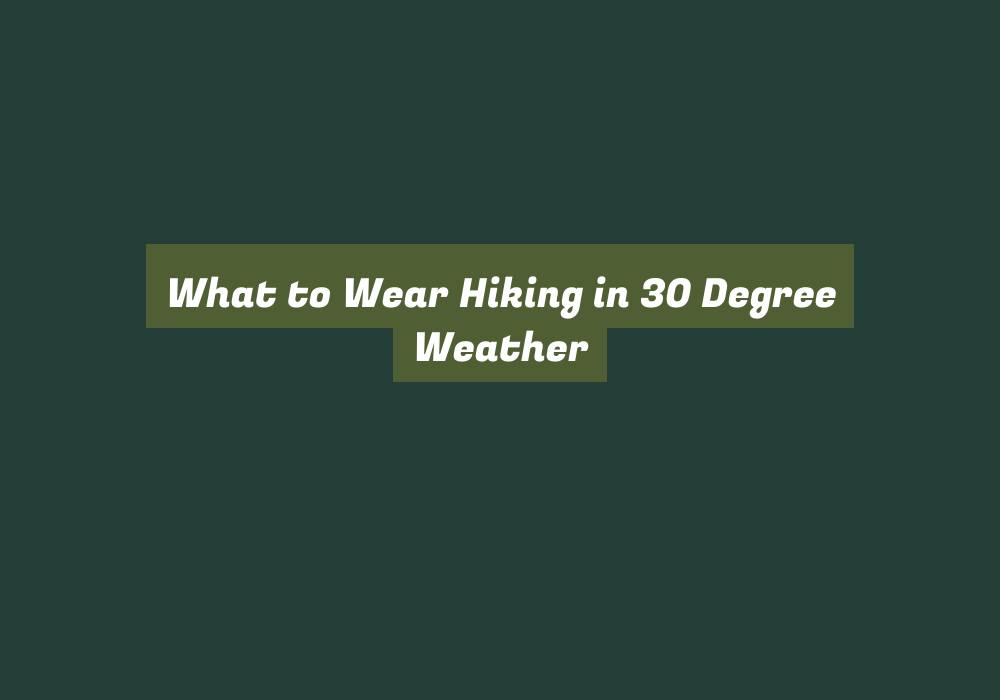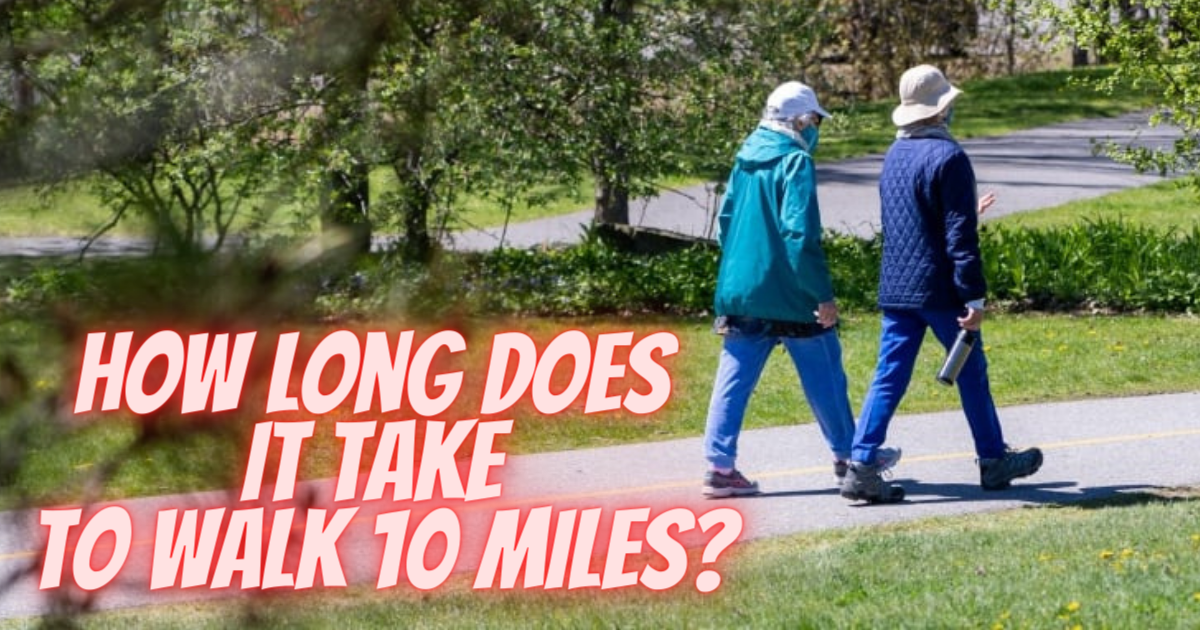When the thermometer dips down to 30 degrees Fahrenheit, having the proper clothing for hiking makes all the difference between an enjoyable trek and miserable suffering in the cold. Choosing versatile layers that insulate when static yet vent while active prevents overheating or getting chilled. This guide covers how to dress from base layers up along with accessory considerations when hiking in 30-degree temps.
Layering Basics for 30-Degree Hikes
The key to comfort during cold weather hiking rests in flexible layering. Adjustments can be made easily in response to variable output and conditions across the route without requiring full outfit changes. Here are the essential components to work from the skin outward:
Baselayers
Worn next to the skin, fitted base layers wick away perspiration from active aerobic output while providing a dry surface for other layers. Lightweight wool and synthetic fabrics excel especially merino blends. For 30-degree temps, midweight base layers provide adequate insulation without excess bulk. Choose a long-sleeved base top and legging bottoms.
Insulation Layers
When activity levels decline or you need extra warmth, insulation layers trap body heat efficiently. Fleece tops and bottoms work well for 30+ degree temps, especially grid or high-loft patterns allowing some breathability. Stash a spare warming layer like a down or synthetic insulated jacket for when you stop moving.
Outer Shell Layer
A weather-resistant soft shell or hardshell jacket and pants block wind and moisture penetration so layers beneath stay dry. Waterproof-breathable technology like Gore-Tex offers an ideal blend of protection and ventilation. For 30-degree weather, a breathable water-resistant shell hits the sweet spot without overheating active bodies.
Hand and Head Coverings
Don’t forget hats, gloves, and neck gaiters to reduce heat loss from vulnerable extremities. Fleece, softshell, or light synthetic insulated options maintain dexterity for hike tasks while keeping hands and head warmer.
Additional 30 Degree Hiking Gear
Supplementary accessories and gear for 30-degree hikes include:
| Gear | Purpose |
|---|---|
| Hiking backpack | Hauls layers, food, water and supplies |
| Trekking poles | Adds stability on rough terrain |
| Sunglasses | Provides foot protection, traction, and ankle support |
| Gaiters | Block debris and moisture from entering shoes/boots |
| Hiking shoes or boots | Carries hot coffee, tea, or soup to warm core temp |
| Thermos | Hauls layers, food, water, and supplies |
| Hand/Toe warmers | Quick boosts of heat for frigid fingers and toes |
| Emergency blanket | Retains heat to prevent hypothermia if injured |
| Fire starter kit | Ignites campfire for emergency warmth if lost |
| Lip balm | Protects chapped, cracked lips |
| First aid supplies | Treats minor medical issues |
| Headlamp | Illuminates trail in dark conditions |
Additional Cold Weather Hiking Tips
Beyond proper gear, extra hiking considerations for 30-degree temps include:
- Stay hydrated by sipping insulated water bladders frequently
- Pack high-calorie snacks to power active muscle output
- Move at a relaxed pace without heavy aerobic strain
- Take photo waypoints if low visibility conditions arise
- Turn back if harsh weather develops unexpectedly
- Brief someone on the precise route and return ETA
Emergency Items
Also, carry a few emergency items should situations take a dangerous turn in the cold:
- Weather radio – Monitors alerts for incoming storms or drops in temperature
- Emergency bivvy – Retains body heat if injured and unable to walk out
- Fire starter kit – Allows igniting campfire for emergency warmth
- Plastic whistle – Creates loud signal to alert location if lost
Having spare layers, ample insulation and weatherproof outer shells combine function, comfort, and safety when the mercury hovers around the 30-degree mark. Adjust yourself in response to the variable output. Listen to your body while matching efforts to the conditions. Staying warm and having backup items for emergencies ensures you’ll have a great time on the trails!
Conclusion
Dressing properly makes all the difference for cold hikes. Focus on moisture-wicking, breathable base layers to start. Then utilize midweight insulation pieces and weather-resistant but air-permeable shells. Accessories like hats, gloves, and gaiters protect vulnerable spots from exposure. Give your body what it needs layer by layer based on effort and elements. Topped by smart navigational and emergency choices, you’ll be fully primed for safe, pleasurable hikes even when the temperatures dip near 30 degrees Fahrenheit. Enjoy that fresh winter air!
Frequently Asked Questions (FAQs)
How many upper body layers are ideal around 30 degrees?
In 30-degree weather during active hiking, aim for three upper body layers – a merino wool or synthetic long-sleeve base layer, a highly breathable insulating mid-layer like a grid fleece, and a water-resistant, air-permeable soft shell or light hardshell jacket. Adjust them independently based on your effort and conditions.
What glove rating is best for 30-degree temps?
Around 30 degrees, a lightweight synthetic glove insert with a fleece or softshell outer glove provides an ideal blend of dexterity and warmth for task-intensive hiking activities. Look for gloves touting warmth ratings around 40-50 degrees to allow some venting to prevent hand sweat.
Is down or synthetic better for 30-degree warmth?
Both downfall and high-quality synthetics like Primaloft work well for 30-ish degree temps. Synthetic insulation holds some advantages by retaining more warmth when damp from sweat or external moisture exposure. Choose per piece based on intended output, breathability, and compressibility preferences.
How many sock layers should you wear at 30 degrees?
A single pair of warm, moisture-wicking merino wool or synthetic hiking socks provide sufficient insulation for 30-degree hiking temps for most people. If prone to very cold feet, adding a thin liner sock beneath helps retain extra warmth. Just monitor for tight fits causing blister friction. Carry spare socks in case of exterior moisture saturation.
What temperature hiking boots for 30 degrees?
Light-insulated leather or synthetic hiking boots rated to 15-25 degrees Fahrenheit deliver ample cold and water protection for 30-degree temps without causing overheating during active trekking. Key features like a Gore-Tex liner, Primaloft insulation, and deep lug outsoles excel on cold trails.
Can you hike comfortably at 30 degrees in light trail runners?
Yes, wearing well-insulated, broken-in trail running shoes with proper moisture-wicking sock layers allows comfortable hiking around 30 degrees. The higher exertion level generates ample internal body heat. Just be prepared to add insulating gaiters or switch to waterproof boots if snow gets encountered on the trails.
How do you stay warm while still hiking hard at 30 degrees?
To generate heat hiking hard at 30 degrees, wear well-fitted base layers and mid layers allowing sweat evaporation. Bring an emergency heat-reflecting mylar space blanket to immediately halt heat loss during rest breaks. Stay hydrated while fueling muscles with high-calorie snacks. Keep lighter gloves and hats accessible for rapid adding/stripping.
What are 30-degree hiking pants made of?
Quality 30-degree hiking pants utilize mid-weight synthetic insulated fabrics like Polartec fleece lining covered by a weather-resistant nylon spandex shell. Articulated patterning allows unrestricted motion while integrated belts and zippered pockets securely stash necessities. Softshell pants also work well across varying 30-ish-degree temperatures during active use.
Can you hike all day at 30 degrees with a day pack?
Yes, hiking comfortably all day at 30 degrees relies upon carrying adequate insulating gear in a streamlined day pack sized appropriately for the duration and remoteness of your intended route. Include quality base and mid layers, lip balm, chemical heating packs, shelter supplies, navigation items, safety tools, spare socks, plus food and fluids to fuel your body’s consistent heat generation.
What is the best way to layer your legs for 30-degree hikes?
A moisture-wicking merino or synthetic long underwear base provides the inner leg layer. On top, wear midweight softshell hiking pants or waterproof hardshell pants reinforced with breathable insulation if anticipating rain or snow. Gaiters seal the transition from pants to boots. Having both breathable and weatherproof legwear combos makes cold hiking more flexible.
Do you need special hiking boots in 30-degree weather?
Not necessarily. Waterproof leather or synthetic hiking boots rated to handle cold temps below freezing work great. But also maintain traction, support, and comfort by wearing well-broken-in highly water-resistant boots you already own. Wear warm merino hiking socks and bring extra pairs. Use gaiter accessories if snow is likely during the trip. Then upgrade boot insulation levels for sustained sub-30-degree winter trips.
What gloves work well around freezing when hiking?
Combination glove systems help regulate hand warmth at freezing mark temps encountered during changeable, highly aerobic winter hiking. Wear snug Merino glove liners beneath more weatherproof fleece, softshell, or lightly insulated over gloves to enable easy adding and stripping while protecting from wind and snow.
Will phone batteries drain faster around 30 degrees when hiking?
Yes, lithium-ion batteries used in cell phones and GPS devices drain faster in cold 30ish-degree environments. Help prolong function by insulating devices close to the body when not in use, activating battery-saver settings where possible, and keeping gadgets off when not needed. Carry an external charging battery pack as a backup for longer trips.
What is the best way to layer your upper body at 30 degrees?
In 30-degree weather, start with a lightweight Merino or synthetic long-sleeve base layer allowing sweat evaporation. Next, add a highly breathable 200-weight fleece jacket. Top that with a wind and water-resistant insulating soft shell or light hardshell jacket to round out flexible core warmth during aerobic activity in cold conditions. Modulate combinations based on output.
Is fleece or wool warmer around freezing temps when active?
In terms of warmth for its weight while active, fleece generally insulates better than wool synthetics near freezing. Polartec high loft fleece traps more warm air without absorbing as much moisture from sweating or external precipitation. But wool still insulates when wet. Choosing pieces per intended use case optimizes on-trail performance.
How do you keep camera batteries warm when hiking around 30 degrees?
To prolong camera battery efficiency in cold weather, tape chemical hand warmers onto the battery before use, shelter the camera inside your jacket between shots, swap out batteries often resting used ones inside layers next to body heat, utilize an insulated camera case, and avoid exposing gadgets needlessly to penetrating winds.
Should raingear be worn over or under layers at 30 degrees?
Around the 30-degree mark during active winter hiking, wear waterproof yet breathable raingear-like well-ventilated hardshell jackets/pants over top of insulating base and mid layers. This blocks external moisture and wind while still allowing sweat vapor to pass through from aerobic output. Adding waterproof shells as external layers retains adaptable insulation control.
You May Also Like

My name is David James I am an adventurous hiker based in California. Through this weblog, I percentage my passion for exploring nature’s wonders, documenting breathtaking trails and hidden gemstones.



